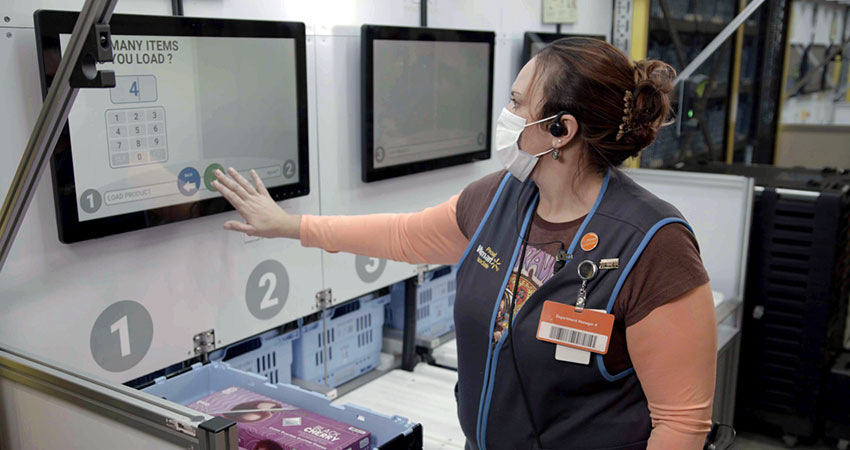Walmart is taking another huge step to cement its leading position in grocery sales, launching an aggressive plan to increase the number of stores using micro fulfillment via automation and robotics to speed orders to local customers as it builds on the digital legacy of the departing Marc Lore.
While Walmart remains the top U.S. food retailer, Amazon – which doesn’t appear on the top 10 in sales – was just named the most popular grocer in the country by CPG/grocery market intelligence firm dunnhumby. Amazon beat out other major players including Costco, Target, Sam’s Club, Aldi, Trader Joe’s and Publix to land atop the grocery beauty pageant. Walmart came in at number 14.
Calling them “local fulfillment centers,” Walmart is planning dozens of locations empowered with the technology, and more to come on top of that, said Tom Ward, SVP of Customer Product, Walmart U.S. in a blog post.
“It’s no secret our customers love the speed and convenience of pickup and delivery,” Ward said. “These local fulfillment centers help unlock our ability to expand even faster to meet their needs today, while also setting a new foundation to serve them in the future.”
The company will be testing various configurations and setups with technology partners, including Alert Innovation, Dematic and Fabric. Some locations will have the MFCs will be built as additions to stores, while in other cases they will sit within a store footprint. Other locations will test out automated pickup points outside the store.
“Walmart was the first food retailer to recognize the need to automate fulfillment of online orders at store level,” said John Lert, Founder and CEO of Alert Innovation. “Four years ago, we began working with Walmart to create the Alphabot technology designed specifically to automate store-level order fulfillment.” Alphabot is the shuttle-based automated storage and retrieval system (AS/RS) used by Walmart.
While much of the picking and assembling of orders will be automated, store associates will still be used to gather things like produce, meats and seafoods and bulkier general merchandise.
Sylvain Perrier, president and CEO of e-grocery platform firm Mercatus, said Walmart has gotten ahead of the curve in ecommerce fulfillment with its massive reach, tech savvy and deep pockets. There are many factors for retailers to consider as they pursue an automation strategy, he said.
“Many retailers are exploring similar concepts, such as dedicated dark stores or micro-fulfillment centers, to enhance accuracy for online picking and packing,” Perrier said. “They’re creating space to take robotics to the next level and allow for additional capacity and centralized route planning. As they do, they need to focus on balancing key factors like floor space and layout, order volume and budget to determine the most effective method for order fulfillment that’s sustainable and scalable.”
Meyar Sheik, chief commerce officer of ecommerce order management platform firm Kibo, said Walmart has it all over Amazon when it comes to groceries and fresh produce due to its loyal customer base and massive store fleet.
“By creating more local fulfillment centers, they have a clear advantage while they catch up on automation through robotics and intelligent sorting systems,” Sheik said. “What sets them apart from Amazon and even Target is their personal shoppers who will hand pick all the fresh produce, meat and seafood from the store and add it to the rest of the order.”
For the record, Target does have a small army of personal shoppers through its Shipt delivery service.
Walmart has been busy investing in and testing all sorts of technology to up its game vs. Amazon. It began piloting store-based fulfillment automation in New Hampshire in 2018, and has also been using scanner bots for store inventory management. It has also been testing self-driving cars from GM’s Cruise, autonomous delivery bots from Nuro and drone delivery in North Carolina.

